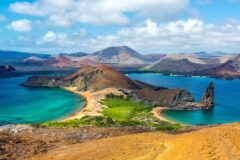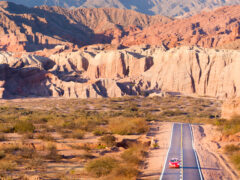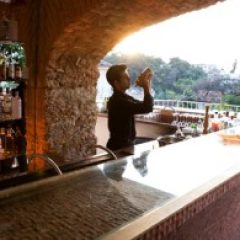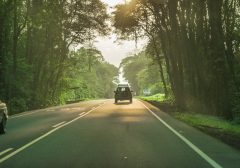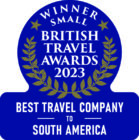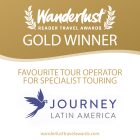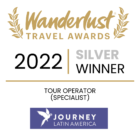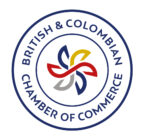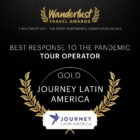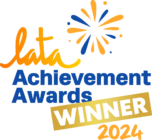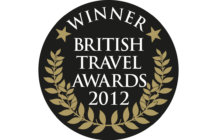Private Journeys
Self-drive Chile: Off the beaten track
14 days from £4,600pp
(based on two people sharing & excluding flights)
Itinerary
 Map
Map
Day 1
Arrive in Santiago. Transfer to hotel in an arty up-and-coming district of the capital.
Transfer from Santiago airport to your hotel in Lastarria, an up-and-coming, arty residential district. The capital is set in a broad valley between snow-capped ranges of the Andes and a smaller coastal range with a distinctly Mediterranean feel. It’s a huge metropolis: a mix of the old and the contemporary, with districts of tree-lined avenues and affluent tranquillity and others full of commercial bustle. Poorer districts sprawl on the outskirts.

Stay at -
Ismael 312
Day 2
Transfer to airport and fly to Chiloé Island. Visit Dalcahue port and Castro, the capital.
Transfer to the airport and fly to Chiloé, an island of mists and mysteries with a strong rural tradition, unique wood-shingled churches and fishermen’s houses on stilts.Upon arrival in Chiloé you have a guided visit by road to Dalcahue, a thriving fishing port on the east coast of the island.
The harbour is usually busy with colourfully-painted wooden fishing boats, while the town’s market is a good place to stop for lunch. Visit Dalcahue’s quaint 19th century wooden church, one of a staggering 16 Unesco World Heritage sites on the island.
Continue to the island’s busy capital Castro, about 10km south of Dalcahue. Castro is nowadays a busy, modern commercial centre but retains a small-town feel and has an evocative setting, straddling a bay enveloped by mist-shrouded, velvety-green hills. Castro’s soaring gothic-style wooden cathedral is among Chiloé’s most impressive attractions. A wonderfully photogenic row of traditional palafito stilt houses survives along its waterfront. In the evening you will have the opportunity to savour Chiloé’s culinary treat, the curanto, a meat and fish stew.

Stay at -
Palafito 1326
Day 3
Guided tour of the surrounding area.
Guided visit to Castro’s produce market, where the displays of seaweed, smoked shellfish, jumbo-sized fresh vegetables and hand-made cheeses showcase the island’s traditional agricultural and fishing-based economy.
Later you are driven north to the coastal hamlet of Qemchi, and cross by a rickety 500m wooden footbridge to tiny Isla Aucar. Its small botanical garden is a sanctuary of native Chilote flora, planted by a priest who managed the island’s 19th century chapel. Continue driving along the coast, with its small fishing communities and a bucolic backdrop of rolling hills, velvety pastures and quaint wooden churches. Stops will be made en route, including lunch with a local family or at a traditional restaurant.

Stay at -
Palafito 1326
Day 4
Take a ferry to Quinchao island. Onward ferry to the mainland, continue to Puerto Varas.
By road and ferry back to the mainland and Puerto Varas in the south of the lake district. This verdant region is criss-crossed with a network of scenic roads linking lakes – most of which seems to have a snow-capped volcanic cone dominating their cobalt waters and sleepy small towns and villages along the shoreline.
Puerto Varas is on the shores of Lake Llanquihue. The town was colonised by Germans at the turn of the 20th century and its architecture and sedate style reflects this, but it is now a fast-growing tourist resort. The town’s main attraction is an alpine green lake framed by tree-clad hills. Beyond is Osorno, one of the most perfectly shaped snow-capped volcanoes in the world. If you’re lucky enough to be in Puerto Varas on a clear and still evening, the sunsets over Osorno’s snowy mantle can be magical, best appreciated from the lakeshore promenade.

Stay at -
Hotel Cabaña del Lago
Day 5
Guided excursion to Alerce Andino National Park.
Guided day excursion to Alerce Andino National Park, created to protect the temperate rainforest of alerce (larch) trees, the largest in Chile. The alerce is a towering, magnificent, majestic tree; it can grow to 60m high with a diameter of up to 5m.
Although numbers were depleted by logging in the 19th and 20th century, there are individual specimens up to 3,000 years old, protected as national monuments. In their natural setting, together with other Patagonian species, they create a magical sylvan environment.

Stay at -
Hotel Cabaña del Lago
Day 6
Fly to Balmaceda in Patagonia, collect hire vehicle, and drive to Puerto Rio Tranquilo.
Transfer to Puerto Montt airport and fly to Balmaceda in the Aisén region. Collect your hire vehicle and set off on your exploration of the Carretera Austral and its link roads.
The 1,240km Austral Road (Carretera Austral) cuts a lonely swathe through some of Patagonia’s most pristine territory. Much of the highway is unpaved, a bumpy gravel track winding its way through craggy mountains and temperate rainforests, fording streams and skirting lakes. Glimpses of remote farmsteads, wood-shingle churches and sheepskin-clad horsemen are a reminder of the traditional way of life which survives here.
This self-drive route begins at Balmaceda (Coyhaique) airport and follows the southern section of the Austral Road for some 450km towards Caleta Tortel. Based at rustic but cosy lodges, you can wander on mountain trails, explore native forests, sail on beautiful lakes and hike to glaciers. The scenery seems to change with every turn and the flexibility of being able to stop whenever you please to take in the views – and to take pictures – is part of the beauty of self-drive.
Today you’ll drive to Puerto Rio Tranquilo for 2 nights. Dry Pampa will gradually give way to green forests, mountains and glacial valleys as you cross the pass at the National Reserve of Cerro Castillo. The journey is approximately 195 kilometres, taking around 5 hours to drive, of which 3-4 hours will be on unpaved road.

Stay at -
Hostal el Puesto
Day 7
At leisure to explore the region.
At leisure to explore the area. You might hire a boat and guide in Lake General Carrera to reach the Marble Cathedral, an impressive eroded marble boulder the size of a large house just off marble cliffs with substantial caves. The stippled surface would do a sculptor proud and the turquoise waters over white marble look positively tropical.
You could alternatively drive along the extremely scenic side road from town which runs 58 km toward the Exploradores glacier, quite breathtaking scenery (4-wheel drive may be needed).

Stay at -
Hostal el Puesto
Day 8
Drive to Caleta Tortel, a village on the Carretera Austral.
Drive to Caleta Tortel via the town Cochrane. The road is unpaved all the way and, although there are stretches where you travel in a straight line, much is along winding roads, going up and down the mountains with vertiginous drops. The road passes through exquisite landscapes – ancient woodland clinging to near vertical cliffs, deep emerald foliage, mirror-clear glacial lakes of different shapes and colours, spikey mountains rising behind – everywhere is a good photo opportunity. The drive takes around 8 hours including stops.

Stay at -
Entre Hielos Lodge
Day 9
At leisure to explore the area.
At leisure to enjoy this gorgeous scenery. The extraordinary village of Tortel was founded in 1955 to exploit the cypress wood that was (and still is) abundant in the area and for most of its history the only access was by air and boat – the road was only built in 2003. Occupying a creek, it has wooden walkways instead of streets, set on in different levels and connecting houses which, in turn, are all on stilts. The village is very tranquil with just a few shops and a couple of simple restaurants.
Stay at -
Entre Hielos Lodge
Day 10
Drive to Puerto Guadal on the shores of Lake General Carrera.
Retrace your route 198 kilometres back up north today to Puerto Guadal. En route you could visit the Tamango National Reserve (30mins from Cochrane) or explore the Chacabuco valley. The scenery from this perspective is as stunning as before, the journey takes about 6hrs.
Puerto Guadal is back on Lake General Carrera, this time on the southwest corner. You stay on the shores of the lake across from the village, with magnificent views across the water. Blessed with a micro-climate that virtually guarantees the best weather in the region (and more days of sunshine than most other lakeside communities) Puerto Guadal is fast becoming a destination of choice for visitors. In spring and summer the meadows are ablaze with colour as thousands of lupins and other plants come into flower. In February the village stages a week-long fiesta where one can watch Chilean-style horse racing and traditional games like La Taba. There’s plenty of traditional Patagonian food to sample.

Stay at -
Mirador de Guadal
Day 11
At leisure to discover local highlights.
At leisure. Your accommodation hosts may suggest some adventures in the vicinity, such as a walk to a waterfall on the Maquis river, just east of town on the road to Chile Chico. There are multiple cascades as the river tumbles over steep cliffs and through dense coigüe and ñire forests as it empties into the lake.
Alternatively you might drive to a mine, abandoned in 1986 by a French mining company. The old mining installations and machinery used to mine deposits of lead, zinc and copper are still in place.

Stay at -
Mirador de Guadal
Day 12
Drop off car at Balmaceda airport and fly to Santiago.
Drive back to Balmaceda airport (6 hrs); drop off your vehicle. Fly to Santiago; transfer to your hotel.

Stay at -
Ismael 312
Day 13
At leisure to explore the capital.
At leisure to explore Santiago. A mixture of chic, residential areas and smart office towers surround the compact colonial centre. If you set off from the University district, you will see the elegant 19th century mansions of the old aristocracy en route to the Plaza de Armas (Main Square) and historic municipal and cultural buildings.
We suggest you continue to the Italian-influenced neighbourhood Bellavista with its cobbled streets, cafés and gift shops. There’s a panoramic view of the city from Cerro Santa Lucía, a hilltop park. If you have time, a funicular tram or cable car can take you to the top of Cerro San Cristóbal. There’s a swimming pool and other family friendly amenities, and you have a panoramic view of the city and the snow-draped Andean mountains beyond.

Stay at -
Ismael 312
Day 14
Transfer to airport for international flight home.
Outline itinerary
Day 1
Arrive in Santiago. Transfer to hotel in an arty up-and-coming district of the capital.
Day 2
Transfer to airport and fly to Chiloé Island. Visit Dalcahue port and Castro, the capital.
Day 3
Guided tour of the surrounding area.
Day 4
Take a ferry to Quinchao island. Onward ferry to the mainland, continue to Puerto Varas.
Day 5
Guided excursion to Alerce Andino National Park.
Day 6
Fly to Balmaceda in Patagonia, collect hire vehicle, and drive to Puerto Rio Tranquilo.
Day 7
At leisure to explore the region.
Day 8
Drive to Caleta Tortel, a village on the Carretera Austral.
Day 9
At leisure to explore the area.
Day 10
Drive to Puerto Guadal on the shores of Lake General Carrera.
Day 11
At leisure to discover local highlights.
Day 12
Drop off car at Balmaceda airport and fly to Santiago.
Day 13
At leisure to explore the capital.
Day 14
Transfer to airport for international flight home.
Inspired by this trip
Our exciting range of articles on Latin America explore everything from iconic destinations and lesser-known cultural gems to delicious traditional recipes. You’ll also find exclusive travel tips, first-hand client reviews and the chance to get your personal questions answered by our travel experts.
Papagaio
Your edit for Latin American inspiration
Our exciting range of articles on Latin America explore everything from iconic destinations and lesser-known cultural gems to delicious traditional recipes. You’ll also find exclusive travel tips, first-hand client reviews and the chance to get your personal questions answered by our travel experts.
View Extraordinary Inspiration